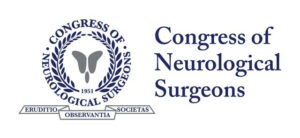
In this article, we shall briefly take a look at the different treatment options offered to patients suffering from lower back pain.
Conservative Medical Treatment
Conservative treatment options include over-the-counter painkillers and certain home remedies that can help manage pain in the short term.
Over-the-counter painkillers include drugs such as paracetamol and non-steroidal anti-inflammatory drugs. These must be taken on advice of the physician. Side effects are rare but must be kept in mind when taking these medications.
Certain home remedies that can help manage lower back pain include the use of hot and cold compresses on the painful area. This can assist with altering the blood flow to the neighboring muscles around the spine, relieving symptoms. Changing one's mattress and maintaining good posture when standing up and sitting down can contribute towards an improvement in symptoms. Exercise is strongly recommended for improving back pain. Physical therapy can accelerate improvement in some cases, and patients may notice a decrease in symptoms in just a matter of weeks.
Surgical Treatments
There are a variety of different surgical treatments that may be offered to patients to help relieve symptoms. Some of these treatments support patients in the short term, while many can alleviate symptoms experienced during long-term pain management.
Facet Joint Injections
This involves the injection of a steroid - with or without an anesthetic agent - into the facet joints of the vertebral bodies. Inflammation within the facet joint is relieved with the steroid (long term) and the anesthetic agent provides immediate pain relief.
Nerve root injections
Nerve root injections involve an anesthetic agent of a steroid, which is injected directly into the small nerve roots that emerge from the spinal cord. Many times, these nerve roots may be inflamed or injured, and the injection can improve their condition. This procedure is performed under fluoroscopy guidance and often provides excellent results.
Intervertebral Disc Surgery
Intervertebral disc surgery involves the removal or shaving of the part of intervertebral disc that is protruding out of its base and pressing upon nerve fibers.
Sometimes, the intervertebral disc is removed and is replaced partly or wholly by an artificial disc. This is called disc replacement surgery. Another surgery includes the removal of the entire disc, with replacement by a bone graft with a metallic prosthesis. This type of surgery is called spinal fusion and is a commonly performed procedure. Spinal fusion is conducted through an anterior (front) or posterior (back) approach.
The advantage of surgery is that it can provide long-term relief of symptoms. In a more general sense, surgery can be performed either through an open approach with a large incision and longer in-hospital stay, or through a laparoscopic approach using specialized equipment. This type of surgery involves just a small incision and a short hospital stay. The choice of surgery depends upon the type of lower back problem experienced, as well as the preference of the surgeon and the patient.


